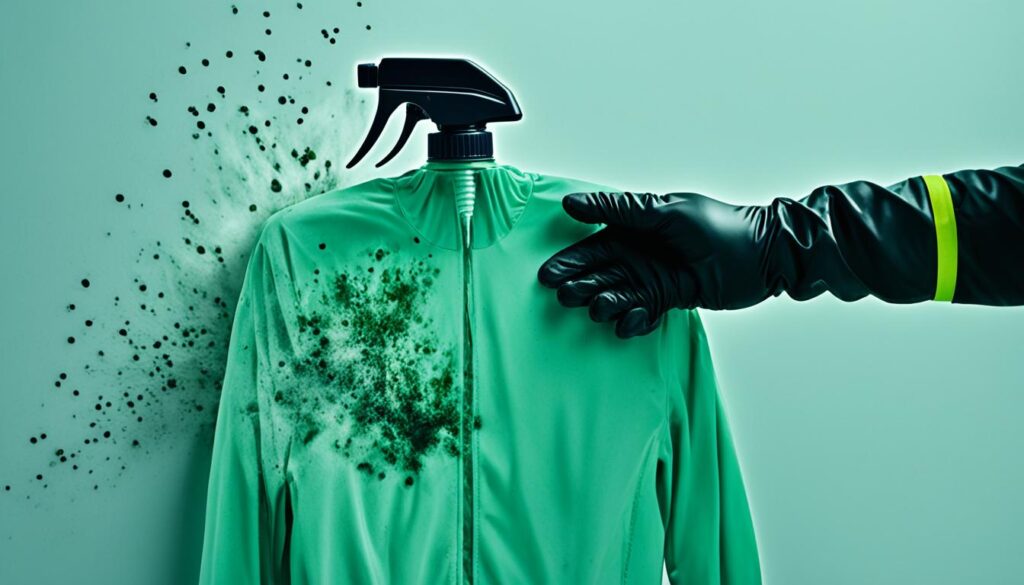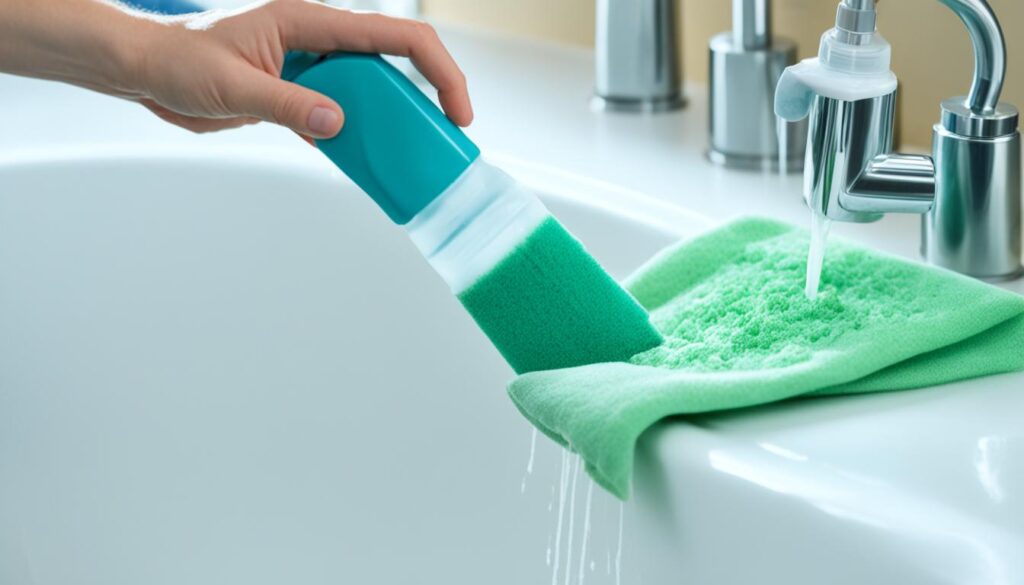
Eradicate Mold: How Remove Mold from Clothes
Mold can be a persistent and unsightly problem, especially when it affects our clothing. Whether it’s a musty smell or visible stains, mold on clothes can be a frustrating issue to deal with. Luckily, there are effective methods to remove mold stains and prevent further growth. In this article, we will provide a step-by-step guide on how to remove mold from clothes, ensuring your wardrobe stays clean and mold-free.
Key Takeaways:
- Removing mold from clothes requires specific techniques and products
- Identify the extent of mold growth before starting the removal process
- Choose the appropriate mold removal method based on the fabric type
- Prevent future mold growth by storing clothes in a dry, well-ventilated area
- Consider professional assistance for severe mold infestations
Understanding Mold on Clothes
Before diving into the mold removal process, it’s important to understand how mold can develop on clothes and the factors that contribute to its growth. Mold is a type of fungus that thrives in damp and humid environments, making your clothing vulnerable to its growth.
Mold on clothes can occur when garments are exposed to moisture for extended periods, such as from sweaty or wet clothes left in a pile or stored in a damp closet. Certain fabrics, like wool or silk, are more susceptible to mold growth than others. Additionally, mold can also develop on clothes that have been affected by water damage or stored in a musty environment.
Now, let’s explore effective treatments for mold on clothes, tips for preventing mold growth, and how to safely remove mold and mildew from garments.

Removing Mold from Clothes: Step-by-Step Guide
When it comes to eliminating mold stains from your clothes, following a systematic approach is essential. In this step-by-step guide, we will walk you through the process of removing mold from fabric, ensuring that your garments are restored to their pristine condition.
1. Assess the Extent of Mold Growth
The first step is to carefully evaluate the severity of mold on your clothes. This will help determine the appropriate course of action and the level of attention needed. Inspect the affected garments for visible mold patches, musty odors, or discoloration.
2. Choose the Right Clothing Mold Cleaner
Once you have assessed the extent of mold growth, it’s crucial to select the appropriate clothing mold cleaner. Look for a product that is specifically formulated to tackle mold stains on fabric. Opt for gentle but effective cleaners to ensure that your clothes are not damaged in the process.
3. Pre-Treat Mold-Stained Fabric
Prior to washing your mold-stained clothes, it’s recommended to pre-treat the affected areas. Apply the clothing mold cleaner directly onto the mold patches and gently scrub using a soft brush or sponge. Allow the cleaner to penetrate the fabric for a few minutes before proceeding to the next step.
4. Launder the Garments
Next, launder the mold-infested garments according to the care instructions provided on the clothing labels. Use the appropriate water temperature and fabric-friendly detergent. It’s advisable to wash the mold-affected clothes separately to prevent cross-contamination.
5. Inspect the Results
After the wash cycle, carefully examine the garments to determine if any traces of mold stains remain. If stubborn mold spots persist, consider repeating the pre-treatment and laundering process. Patience and thoroughness are key to achieving mold-free clothes.

6. Dry the Clothes Properly
Once you are satisfied with the results, it’s important to dry the clothes properly to prevent any residual moisture that could trigger mold regrowth. Hang the garments in a well-ventilated area or use a dryer on the appropriate settings. Avoid storing damp clothes to keep mold at bay.
7. Prevent Future Mold Growth
To minimize the risk of mold growth on clothes, it’s essential to implement preventive measures. Store garments in dry, well-ventilated spaces, avoid damp environments, and promptly address any moisture issues. Additionally, regularly inspect your clothing for any signs of mold and take immediate action if detected.
“Properly removing mold from clothes requires a systematic approach, attention to detail, and the right products. Following our step-by-step guide will ensure that your garments are mold-free and safe to wear again.”
Conclusion
In conclusion, removing mold from clothes can be a challenging task, but with the right techniques and tips, you can successfully eradicate mold and restore your clothing to its former glory. By following the best mold removal methods outlined in this guide, you’ll be able to effectively remove mold stains and ensure your garments are mold-free.
Remember, prevention is key to avoiding future mold growth on your clothes. Take proactive measures such as storing your clothes in well-ventilated areas, using dehumidifiers in humid environments, and regularly inspecting your wardrobe for any signs of mold. These preventive steps will go a long way in maintaining mold-free clothing.
If you’re dealing with a severe mold infestation or have concerns about the effectiveness of DIY approaches, it’s always a good idea to seek professional help. Companies like Fix Mold Miami offer mold assessments and remediation services, utilizing their expertise to ensure thorough mold removal and prevention.
With the knowledge and tools at your disposal, you can reclaim your wardrobe from mold and enjoy fresh, clean clothes once again. Say goodbye to mold stains and hello to a mold-free future!




